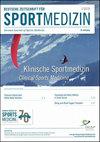Footstrike patterns in runners: concepts, classifications, techniques, and implicationsfor running-related injuries
Q3 Health Professions
引用次数: 20
Abstract
Biomechanical running gait analysis in athletes has been reported to be a crucial part of improving running style (9, 13). Clinicians commonly analyze running gait patterns to prevent or treat injuries that are related to a poor alignment or possibly damaging biomechanics (27). Besides the clinical significance of an appropriate running gait analysis, scientists also assess the biomechanics of athletes, mostly runners, to ensure an efficient running technique (41). A common component of analyzing running technique is the determination of footstrike patterns in athletes (9, 11, 22). Typically, the footstrike pattern is defined as a biomechanical analysis of the way the foot touches the ground (35), A common interpretation of this definition uses the distinction of three footstrike patterns (Fig. 1): forefoot strike (FFS), midfoot strike (MFS), rearfoot strike (FRS). Several modifications have been made to this popular classification. For instance, some authors Tim Hoenig Department of Sports and Exercise Medicine Institute of Human Movement Science University of Hamburg Turmweg 2, 20148 Hamburg, Germany : tim.hoenig@stud.uke.uni-hamburg.de SCHLÜSSELWÖRTER: Laufen, Biomechanik, Überlastungsverletzungen跑步者的脚踢模式:跑步相关损伤的概念、分类、技术和含义
据报道,运动员的生物力学跑步步态分析是改善跑步风格的关键部分(9,13)。临床医生通常分析跑步步态模式,以预防或治疗与对齐不良或可能破坏生物力学有关的损伤(27)。除了适当的跑步步态分析的临床意义外,科学家还评估运动员(主要是跑步者)的生物力学,以确保有效的跑步技术(41)。分析跑步技术的一个常见组成部分是确定运动员的脚踩模式(9,11,22)。通常,脚踢模式被定义为对脚触地方式的生物力学分析(35)。对这一定义的常见解释使用了三种脚踢模式的区别(图1):前掌触地(FFS)、中足触地(MFS)和后脚触地(FRS)。对这种流行的分类法作了一些修改。例如,一些作者Tim Hoenig运动与运动医学系人类运动科学研究所汉堡特姆韦格大学,2014年2月8日,德国汉堡:tim.hoenig@stud.uke.uni-hamburg.deSCHLÜSSELWÖRTER:Laufen,Biomechanik,Überlastungsverletzungen
本文章由计算机程序翻译,如有差异,请以英文原文为准。
求助全文
约1分钟内获得全文
求助全文
来源期刊

Deutsche Zeitschrift fur Sportmedizin
Medicine-Orthopedics and Sports Medicine
CiteScore
2.00
自引率
0.00%
发文量
30
审稿时长
>12 weeks
期刊介绍:
The Deutsche Zeitschrift fuer Sportmedizin - German Journal of Sports Medicine has been
founded in 1951 and is dedicated to the biomedical science and clinical practice of Sports
Medicine and its border fields which investigate the influence of exercise, physical training
and sports as well as lack of exercise to healthy and sick people of all age-groups, related to
prevention, diagnosis, therapy, rehabilitation and physical training.
Manuscripts which deal with actual scientific and medical findings, new hypotheses, actual
controversies and problems in real life will be published. Possible Topics are physiology
and pathophysiology of exercise, medical and biological findings, the medical therapy of
exercise-related medical problems, epidemiology of sedentary lifestyle and related
disorders, therapy of sports injuries - especially the conservative postoperative treatment
of injuries -, medical training and rehabilitation medicine, as well as special social,
cultural, psychological and special science-related aspects of the entire scientific field.
 求助内容:
求助内容: 应助结果提醒方式:
应助结果提醒方式:


